Tag: collagen
Protect Your Skin this Winter!
You might think it’s most important to protect your skin from the sun and elements during the hot summer months. However, protecting your skin is important all year round! While it’s true that UV rays are at their strongest in the spring and summer during the mid-day (depending on where you live in the world), this doesn’t mean that you can’t damage your skin during the winter months.
So, here are six crucial steps that I take every winter to keep my skin protected and looking its best, despite the dryness and cold!
1. Don’t Skip the Sunscreen
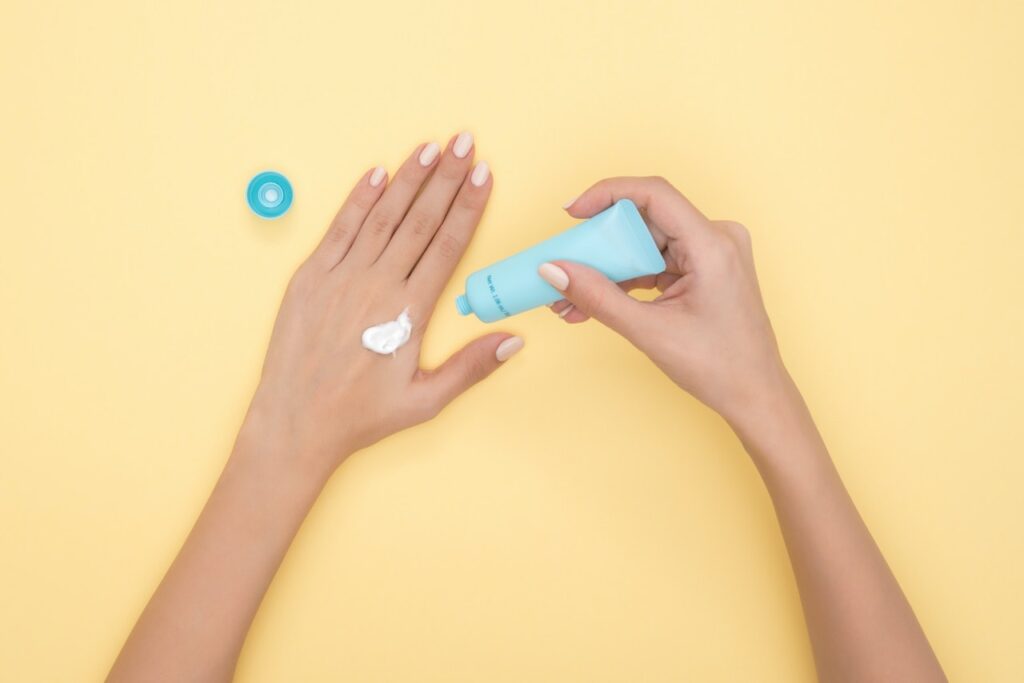
Did you know that you can get sunburned even when it’s cloudy outside? While the sun’s rays might not seem as severe during the winter months, UVA rays are still able to penetrate the clouds and damage your skin. And, if there’s snow on the ground you might even be at higher risk! The bright drifts of snow reflect the sun’s light, which can allow UV rays to hit your skin even if you aren’t expecting it.
You might not have as much skin available to burn as you bundle up, but it’s important to find a good sunscreen for your face and neck. You’ll want to look for a product that offers at least 30 SPF!
2. Moisturize, moisturize, moisturize
As you probably guessed, moisture is key in the wintertime! And finding good moisturizers and lotions for your skin is crucial.
Pro Tip: Finding a good face and lip moisturizer with SPF is even better!
While you might think it’s only important to moisturize in the morning and night, you might benefit from even more frequent application, especially if you are prone to dry skin. And, if you find your skin is really struggling, try adding a few drops of jojoba or vitamin E oil to your moisturizer or lotion. I keep a travel sized lotion and chapstick with me at all times. It really helps in the dry winter months, and protects my skin from cracks and damage.
3. Drink Lots of Water
Did you know that your body is mostly made up of water? A lot of that water is stored in your skin, to keep it plump and elastic. Additionally, water circulates in our bodies to transport important nutrients, regulate our temperature, and clear toxins from our system. We need a lot of water daily to keep our body and skin healthy!
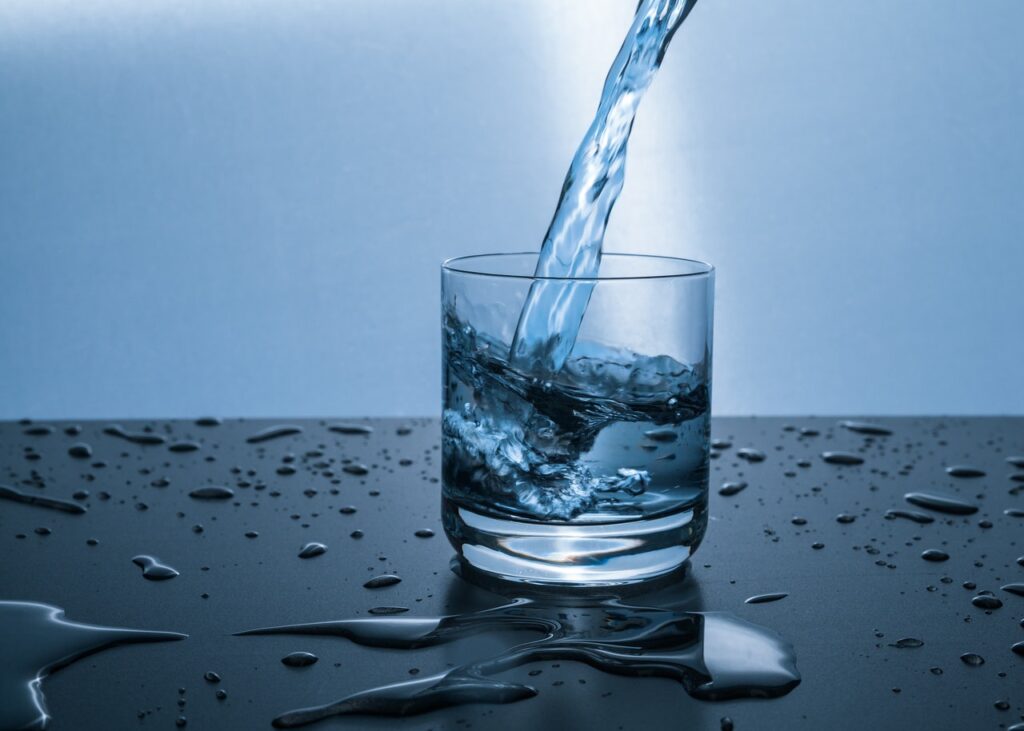
When you’re dehydrated, water is pulled from your skin to help our internal organs function properly. This can leave it feeling dry, and prone to damage. It is important to stay hydrated to help maintain our skin’s health and appearance. Research has found that improving water intake can be helpful in improving the skin’s appearance, especially for those who are chronically dehydrated. [1] However, skincare expert, Kathleen C. Suozzi, MD, director of aesthetic dermatology at Yale Medicine and assistant professor at Yale School of Medicine in New Haven, Connecticut, notes “Excessive hydration is unlikely to benefit the skin.”
So, aim for about 64 oz of water daily (that’s eight 8 oz glasses of water), to optimally hydrate your body and your skin during the winter months.
4. Don’t Forget Your Lips!
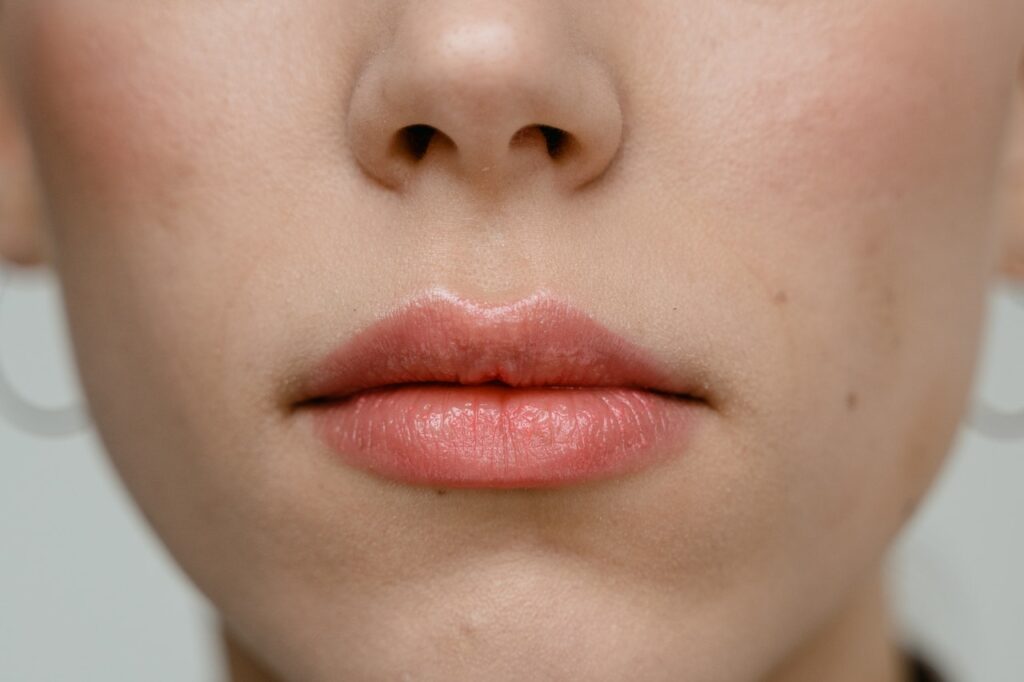
There is nothing more irritating than chapped lips during the winter time. The skin on your lips is quite thin and delicate, making it more susceptible to breakage and moisture loss. You’ll want to prepare for the winter season by finding a good chapstick that offers both moisture and sun protection. That’s right – your lips can get sunburned too, so you’ll want to protect them from UV rays by choosing a chapstick with SPF!
5. Opt for a Humidifier
While it’s true that the cold and dry winter air can certainly cause some strain on your skin, it might not be any better inside. Turning up the temperature and staying cozy inside can actually drain your skin of its moisture, without proper humidification!
If you find yourself stuck inside often during the winter months, it might be a good idea to look for an indoor humidifier! Humidifiers will add moisture to the air, which will also help prevent your skin from drying out when the heat is cranked up.
6. Collagen
Collagen is known to play an important role in our skin’s elasticity, hydration, and texture. We need a lot of collagen to keep ourselves looking and feeling our best. And, considering that natural collagen production drops off around age 20, and continues to decrease over time, it’s important for us to continue to optimize our collagen intake as we age. [1] This decrease can be accelerated even more with certain behaviors, like smoking and exposing the skin excessively to UV light.
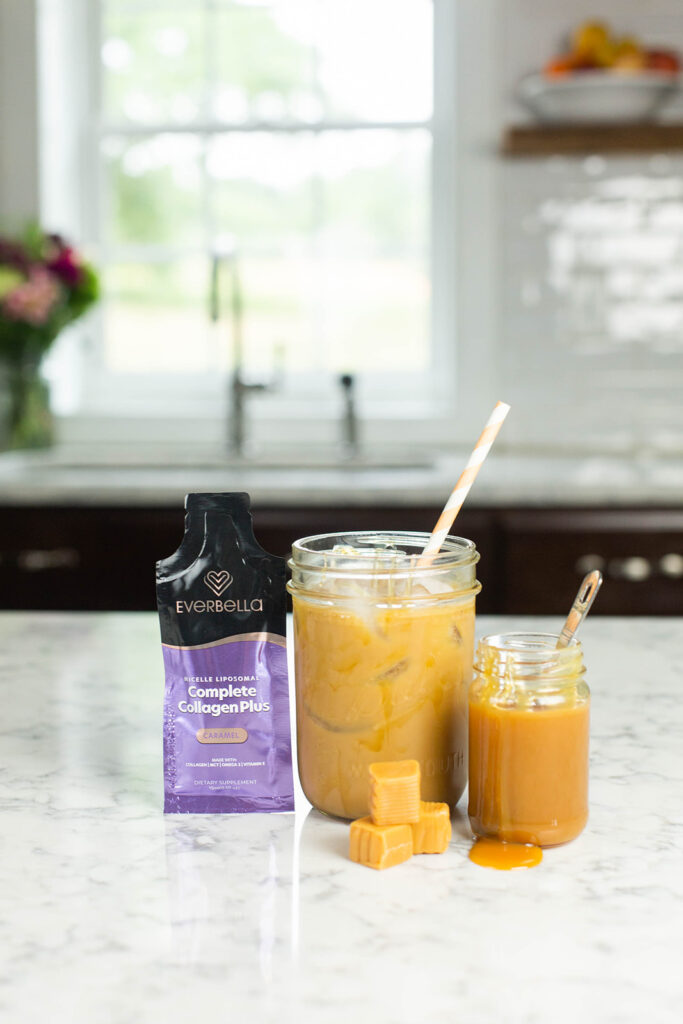
Due to this decrease of natural collagen production, there have been many studies to explore the effect of collagen supplementation on improving skin elasticity, hydration, and texture in an aging population. The evidence supports that collagen supplementation is an effective way to increase collagen synthesis and reduce the appearance of aging [2-4].
So, for hydrated and glowing skin all year round, I always opt for my daily dose of Complete Collagen+. It does wonders for my skin, and it’s a staple part of my skincare routine all year round! Give it a try, risk-free, for 180 days with our money back guarantee.
Citations
- “Collagen Synthesis.” Collagen Synthesis – an Overview | ScienceDirect Topics, https://www.sciencedirect.com/topics/engineering/collagen-synthesis.
- Bolke L, Schlippe G, Gerß J, Voss W. A Collagen Supplement Improves Skin Hydration, Elasticity, Roughness, and Density: Results of a Randomized, Placebo-Controlled, Blind Study. Nutrients. 2019;11(10):2494. Published 2019 Oct 17. doi:10.3390/nu11102494
- de Miranda RB, Weimer P, Rossi RC. Effects of hydrolyzed collagen supplementation on skin aging: a systematic review and meta-analysis. Int J Dermatol. 2021 Mar 20. doi: 10.1111/ijd.15518. Epub ahead of print. PMID: 33742704.
- Choi FD, Sung CT, Juhasz ML, Mesinkovsk NA. Oral Collagen Supplementation: A Systematic Review of Dermatological Applications. J Drugs Dermatol. 2019 Jan 1;18(1):9-16. PMID: 30681787.
Coffee Anyone?
Many of us can’t imagine a morning routine without caffeine, whether you’re a black coffee drinker or you enjoy a milky cup of English breakfast tea. I know I’m hopeless without my morning coffee!

However, you may find this dietary stimulant to be a bit temperamental. You might feel a little shaky if you’ve had too much, or if you haven’t eaten anything for breakfast yet. You know you’ll feel a headache coming on when you go without it. And on the off chance that you indulge a little too late in the day, there is no chance you’re sleeping tonight.
With all these side effects of caffeine, you may begin to wonder if it’s really all that healthy for you in the first place. In this blog, I want to break down the pros and cons of caffeine intake, and provide some guidelines on how you can enjoy it responsibly (without the shakes and headaches).
What is caffeine?
Many cultures use caffeine, a plant-based compound, as a natural stimulant. You’ll most commonly find it naturally in coffee and a variety of teas, but you can also find it in products made from the cocoa bean, such as chocolate! There are also a variety of energy drinks, foods, and supplements with added caffeine.
It acts on our central nervous system to induce its energizing effects. And it works quickly. In fact, 99% of the caffeine found in coffee, teas, and other caffeinated foods and beverages is absorbed within 45 minutes of ingestion!
Once it is absorbed into the bloodstream, it is able to exert its effects on the central nervous system. It’s most well known for blocking the action of adenosine, a neurotransmitter in the brain that relaxes the blood vessels. In doing so, it also allows for the secretion of norepinephrine, dopamine, acetylcholine, serotonin, glutamate, and gamma-aminobutyric acid (GABA). This leads to the alert, awake feeling that caffeine intake promotes. [1]
The benefits of caffeine
Aside from that little extra perk to your day, there are many benefits that caffeine can offer. Let’s explore a few of the most significant benefits:
- Boosted metabolism: Caffeine is a stimulant, which has the ability to increase the rate of our metabolism. In fact, one study showed that 300 mg daily could increase energy expenditure and burn up to 79 extra calories per day. [2] It is thought that caffeine may help control weight status, though the effects are relatively small.
- Cardiovascular health: Studies have looked at the impact of coffee intake, and found that it is associated with decreased risk of heart disease and stroke. [3-4] Research has also established the association between decreased risk of stroke, and intake of green tea.
- Brain function: As mentioned previously, caffeine has the ability to block the action of adenosine, which can boost secretion of molecules like dopamine and serotonin. Both of these neurotransmitters are known to play a role in mood, which could be part of the reason why it is thought that caffeine can play a role in our mental health. It has also been thought to improve focus, and has been associated with decreased risk of cognitive diseases, such as Alzheimer’s and Parkinson’s disease. [6-8]
While it definitely has its benefits, there are a few risks associated with excessive intake. Let’s dive deeper into the downsides of caffeine intake, and why you want to be careful about overdoing it on the coffee.
The risks
If you’ve ever had too much coffee, you’re probably familiar with the effects of having a little bit too much. While there are some serious consequences to be aware of, such as increased blood pressure, many of the negative effects of caffeine are probably ones you’ve experienced yourself at some point. [9] This may include:
- Anxiety
- Increased heart rate
- Difficulty sleeping
- Digestive issues
- Frequent urination
- Energy spikes and crashes
If you find that your hands are shaking after a few cups of coffee, it might be a good idea to cut back! It’s important to determine how much caffeine is right for you. It’s also important to know that not all caffeinated drinks are created equal. While the caffeine from coffee might cause a larger crash, you might find that the caffeine from a matcha latte offers a smoother come down from the caffeine rush. So, to avoid the risks, how much caffeine should you aim for on a daily basis? Let’s find out.
How much caffeine is safe to consume?
Now, how much caffeine is actually safe for you to consume on a daily basis? Research shows us that for healthy adults, 400 mg per day appears to be a safe amount of caffeine. Those who are pregnant should consume less, and limit intake to about 200 mg per day. Let’s break down the most common sources of caffeine, and their milligrams per serving (usually 8 oz), so you know how to divide up your daily dose of caffeine.

Black coffee: 95 mg
Green tea: 28-29 mg
Black tea: 47 mg
Caffeinated soda: 29-30 mg
Energy drinks: ranges from 85-300 mg per serving
Chocolate: about 12 mg per oz
So, for the average healthy adult, that’s about 4 cups of coffee OR about 13 cups of green tea, or 33 oz of chocolate! Mix and match as you like, but ultimately, it seems that it’s pretty easy to stay within the daily caffeine recommendations.
I definitely don’t plan on ditching my morning coffee anytime soon, especially now that the weather has gotten colder. And I love to give it a delicious caramel boost with Complete Collagen+! You can give it a try too, risk-free, with our 180 day money back guarantee!
Citations
- Institute of Medicine (US) Committee on Military Nutrition Research. Caffeine for the Sustainment of Mental Task Performance: Formulations for Military Operations. Washington (DC): National Academies Press (US); 2001. 2, Pharmacology of Caffeine. Available from: https://www.ncbi.nlm.nih.gov/books/NBK223808/
- Rudelle, Servane, et al. “Effect of a Thermogenic Beverage on 24-Hour Energy Metabolism in Humans*.” Obesity, vol. 15, no. 2, 2007, pp. 349–355., https://doi.org/10.1038/oby.2007.529.
- Jiang-nan Wu, Suzanne C Ho, Chun Zhou, Wen-hua Ling, Wei-qing Chen, Cui-ling Wang, Yu-ming Chen. Coffee consumption and risk of coronary heart diseases: A meta-analysis of 21 prospective cohort studies. International Journal of Cardiology, Volume 137, Issue 3. 2009. Pages 216-225, ISSN 0167-5273. https://doi.org/10.1016/j.ijcard.2008.06.051
- O’Keefe, James H et al. “Effects of habitual coffee consumption on cardiometabolic disease, cardiovascular health, and all-cause mortality.” Journal of the American College of Cardiology vol. 62,12 (2013): 1043-1051. doi:10.1016/j.jacc.2013.06.035
- Kokubo, Yoshihiro, et al. “The Impact of Green Tea and Coffee Consumption on the Reduced Risk of Stroke Incidence in Japanese Population.” Stroke, vol. 44, no. 5, 2013, pp. 1369–1374., https://doi.org/10.1161/strokeaha.111.677500.
- Heckman, Melanie A., et al. “Caffeine (1, 3, 7-Trimethylxanthine) in Foods: A Comprehensive Review on Consumption, Functionality, Safety, and Regulatory Matters.” Journal of Food Science, vol. 75, no. 3, 2010, https://doi.org/10.1111/j.1750-3841.2010.01561.x.
- Carman, A.J., Dacks, P.A., Lane, R.F. et al. Current evidence for the use of coffee and caffeine to prevent age-related cognitive decline and Alzheimer’s disease. J Nutr Health Aging 18, 383–392 (2014). https://doi.org/10.1007/s12603-014-0021-7
- Qi, Hui, and Shixue Li. “Dose-response meta-analysis on coffee, tea and caffeine consumption with risk of Parkinson’s disease.” Geriatrics & gerontology international vol. 14,2 (2014): 430-9. doi:10.1111/ggi.12123
- Shah, Sachin A et al. “Effects of Single and Multiple Energy Shots on Blood Pressure and Electrocardiographic Parameters.” The American journal of cardiology vol. 117,3 (2016): 465-8. doi:10.1016/j.amjcard.2015.11.017
Foods to Keep you Satisfied for Hours!
There is nothing more frustrating than eating, only to feel starving an hour later! It drives me crazy, and oftentimes, I struggle to feel satisfied…
Not too long ago, I learned that there’s more to healthy eating than just eating the right ingredients. It’s also important to consider our satisfaction with the food choices we make! Otherwise, if we aren’t satisfied, how can we expect to keep up healthy eating for the rest of our lives?
For me, satisfaction means two things:
- Every once in a while, I get to treat my sweet tooth. And…
- I don’t feel hungry all the time.
There are a few healthy eating strategies that I use for encouraging satiety (AKA fullness). They help me keep up on my smart food choices, AND they leave me feeling full, so I’m not mindlessly snacking to satisfy my hunger. Let’s get into it!
Stay Satisfied with Fiber
Fiber is essential for long-lasting satisfaction after meals. There are two main types of fiber – soluble and insoluble fiber. They both have important roles in the maintenance of our health, and in keeping us full and satisfied after meals! Let me explain the difference between these two types of fiber.
Soluble Fiber
This is the type of fiber found in oats, bran, seeds, legumes, and some fruits and veggies. It dissolves in our digestive system as it combines with other solids and liquids, and forms a gel-like substance that binds with other nutrients. This form of fiber offers a few different benefits:

- Soluble fiber binds with cholesterol and prevents it from being absorbed into the bloodstream (thereby preventing accumulation of unhealthy cholesterol in the body). Instead, it is excreted with the rest of your food waste!
- Soluble also can bind with other foods in your stomach, particularly carbohydrates. This can slow down the rate of stomach emptying and absorption of nutrients, which is helpful for controlling blood sugar!
- This slowed digestion also contributes to an extended feeling of fullness, which keeps us feeling satisfied after meals, for longer periods of time! [1]
Insoluble Fiber
You’ll find insoluble fiber in the skins of fruit, vegetables, beans, grains, and legumes (so leave the skins on as often as possible!). Insoluble fiber behaves a bit more differently than soluble fiber. Rather than dissolve into a gel, insoluble fiber maintains its structure. This affects our digestion in a few ways:
- Insoluble fiber can absorb lots of water, which creates a physical fullness. Meaning that water takes up a lot of space, and can give us that feeling of fullness.
- The added moisture and bulk to the food we digest can help aid digestion, and keeps us… Well, you know, regular. No complaints there! [1]
If you ever significantly increase the amount of fiber in your diet, you’ll want to make sure you increase your water intake. This will help you absorb and use the fiber to your benefit, otherwise you might experience a little extra gassiness and bloating.
Mix your Macros
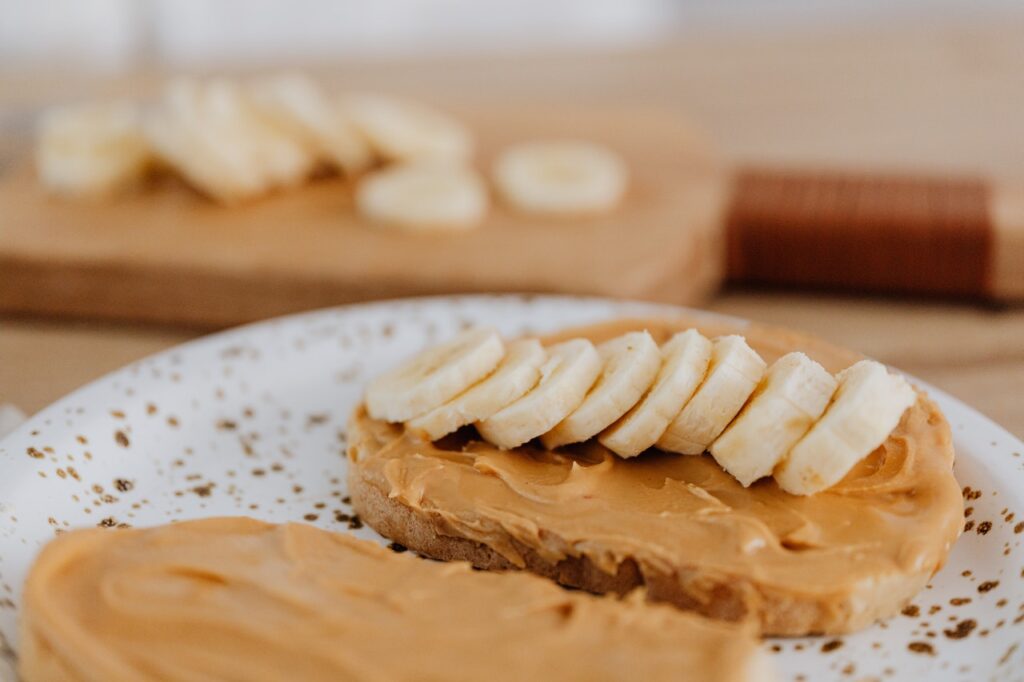
It’s always important to mix things up, especially when it comes to the macronutrient composition of your meals! When I say macronutrients, I mean the major nutrients that contain calories – carbohydrates, fat, and protein. Here’s how this can help your feelings of satiety and satisfaction…
Your body has to put in a lot of effort to digest and metabolize the food you eat. And different macros are digested and metabolized in different ways:
- Fat is digested slowly, which can definitely help keep you fuller, longer. However, on its own, high fat meals can leave you feeling sluggish and fatigued, and unsurprisingly doesn’t leave you feeling satisfied for very long. Studies have shown that fat alone actually has the least satiating effect, in comparison to carbs and protein. [2] So, it’s best to mix fats with other macros so you’re not feeling full in the next hour.
- All carbs are not created equal. Some carbs, complex carbs, contain a good amount of fiber, which can help keep you full (see above). However, simple carbohydrates have less ability to keep you satiated. These simple carbs usually cover sugars and sweeteners, like table sugar, brown sugar, coconut sugar, agave, honey, and corn syrup. Imagine staying full on just sugar. You can imagine why it’s not the most effective…
- Protein on its own may be the most satiating of the bunch, as dietary protein increases the production of fullness inducing hormones, and decreases the production of our hunger hormones. [3] However, you’ll extend your fullness and satisfaction even more by adding a little extra carb and fat here and there…
So mix your macronutrients! Don’t just eat a carb for breakfast, eat a carb plus a fat, or a carb plus a protein. Skip that high fat dinner, and opt for a more moderate mix of fat plus protein, or fat plus carbs! I think you can catch on at this point…
Adding at least two macronutrients to any meal is an easy, and healthy way to extend your satiety. Even after hours, you’ll still feel satisfied!
Collagen for Satiety
Have you ever heard that collagen may be helpful in promoting weight loss? There are a few reasons that collagen has taken on this reputation, but the simplest reason is related to its effect on satiety.
Ultimately, collagen is a protein. As I mentioned previously, protein may be more satiating because of its influence on satiety inducing hormones, and its suppression of hunger hormones. [3-4] So, after consuming a high protein food item, such as collagen, we may experience an increase in fullness after the meal. Improved satiety and satisfaction after meals can contribute to decreased caloric intake, which can lead to weight loss in some circumstances.
So, there you have it! Three actionable steps you can take today to help keep you satisfied and full, longer! Say goodbye to those hangry moods and mindless snacking, and fuel your body efficiently.
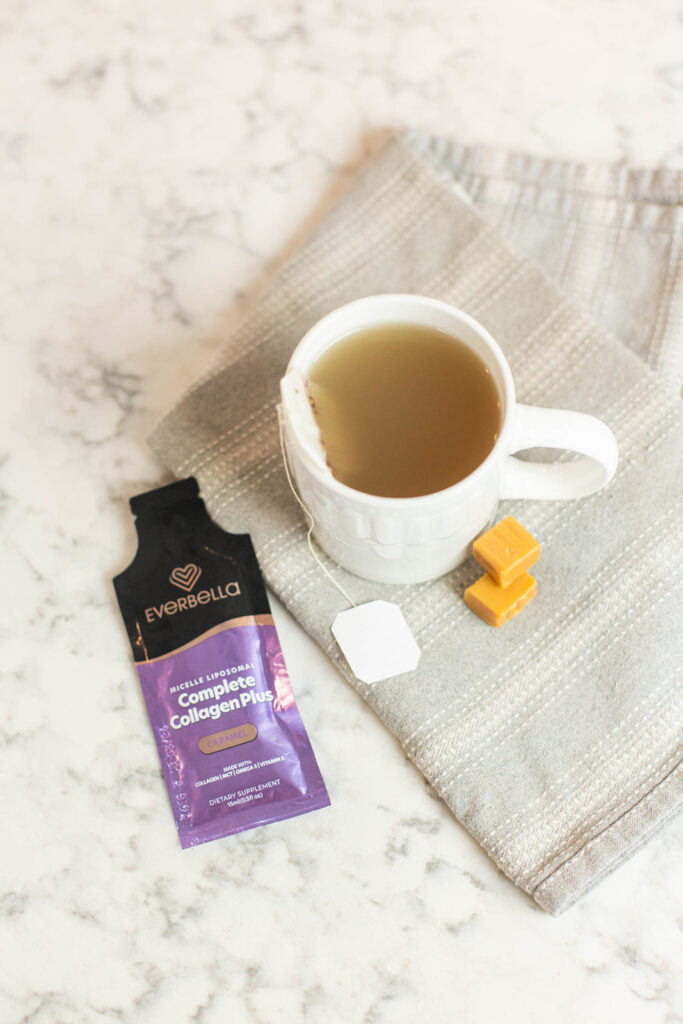
And if you’re searching for a high quality, highly absorbable collagen option… Complete Collagen+ is the way to go. You’ll love the rich caramel flavor (it’s perfect in my morning coffee), and all of its powerful benefits!
Try Complete Collagen+ risk-free, with our 180-day money back guarantee!
Citations
- Gardner, Amanda. “Dietary Fiber: Insoluble and Soluble Fiber.” WebMD, WebMD, 23 July 2015, https://www.webmd.com/diet/features/insoluble-soluble-fiber.
- Samra RA. Fats and Satiety. In: Montmayeur JP, le Coutre J, editors. Fat Detection: Taste, Texture, and Post Ingestive Effects. Boca Raton (FL): CRC Press/Taylor & Francis; 2010. Chapter 15. Available from: https://www.ncbi.nlm.nih.gov/books/NBK53550/
- Moon, Jaecheol, and Gwanpyo Koh. “Clinical Evidence and Mechanisms of High-Protein Diet-Induced Weight Loss.” Journal of obesity & metabolic syndrome vol. 29,3 (2020): 166-173. doi:10.7570/jomes20028
- Hochstenbach-Waelen, Ananda et al. “Single-protein casein and gelatin diets affect energy expenditure similarly but substrate balance and appetite differently in adults.” The Journal of nutrition vol. 139,12 (2009): 2285-92. doi:10.3945/jn.109.110403
Four Tips to Help with Damaged Hair
As I’ve learned how to care for my hair over the years, I’ve realized that there are so many things to consider. You know I talk about diet and nutrition all the time for healthy hair, but I don’t often talk about the way I care for my hair on a day-to-day basis aside from that.
The truth is, it’s been a lot of trial and error. I’ve overwashed it, I’ve underwashed it, I’ve tried dozens of different products, I’ve stopped using heat… Even still, I struggled with brittle and breakable hair.
It turns out, I was overcomplicating things. Let me share a few of my simplest hair tips that helped me prevent breakage and split ends, and left me with luscious and healthy hair!
Brushing Your Hair Wet
Your hair is weakest when it’s wet – wet hair tends to be stretchier and more elastic, which can result in easy breakage without care. This means that as you run a brush through your hair post-shower, there is great potential for damage!
For those with straight, thinner texture, brushing wet hair can cause stretching, breakage, and can even pull it right out of its root! This may result in signs of breakage and split ends when the hair dries. On the other hand, those with curly, more coarsely texture, know the challenges of trying to brush hair when it’s not wet. For these individuals, it can actually be safer for it to be brushed when it’s had a little hydration.
I know how annoying it can be to try and tackle tangles after your hair has dried. Which is why I have a couple of tips that might help ease your pain:
- Pre-brush your hair before you get into the shower
- Gently untangle your hair in the shower with your fingers
- Opt for a detangling conditioner or leave-in conditioner for after you hop out of the shower
- If you need to brush through some tangles while your hair is wet, very gently start at the bottom of your hair, and work your way up
You still might have to fight through some tangles later. However, it can greatly benefit your hair to practice a little patience, and to be incredibly gentle with your hair, especially while it’s wet.
Wrap Wet Hair in a Cotton T-Shirt Rather than a Towel
Because your hair is so vulnerable when it’s wet, it’s important to treat it as gently as possible. As our hair drips wet after a shower, many of us may opt to wrap it up in a heavy towel to soak up some of that extra moisture. However, this method of drying hair can actually cause further damage. This can happen for a couple of reasons.

I previously mentioned that our hair is more prone to damage while wet because it’s stretchier and more elastic. Now, imagine the weight of a heavy bath towel, pulling on our scalp and tugging at our hairs as they are twisted into a towel! It makes sense that this technique might actually be causing some damage. Additionally, the fibers in bath towels tend to be rough, and abrasive on hair. The hairs can catch on the rough fibers, and can easily be pulled from their follicle.
So, without a bath towel, how else can you dry your hair? Experts recommend that a soft, cotton t-shirt or small microfiber towel is the best way to soak up the extra water in your hair after a shower! You’ll still want to be gentle, but ultimately, these options will be much less abrasive as it dries. Avoid rubbing or ringing it too aggressively, and this will be a much safer option to protect the quality of your luscious locks.
Avoid Excessive Heat

Using heat on your hair is yet another way to cause damage, if you’re not careful. Using heat is not going to compromise itss health right off the bat, it’s the excessive use of heat, and excessive temperatures that can be the most problematic. Heat can cause the cuticle of our hair (the protective outer layer) to lose moisture, become brittle, and make it susceptible to damage.
Just like our skin needs to be protected from the heat of the sun, our hair needs to be protected from the heat of hot showers and styling tools. So, follow these tips if you want to prevent it from being fried!
- While a hot shower always feels amazing, turn down the temperature as much as you can bear when washing and rinsing your hair
- Always use a heat protectant spray before curling, straightening, or blow drying your hair
- Turn down the temperature of your styling tools – thinner and finer hair should aim to use a temperature below 380º, while thicker and more coarse hair can probably tolerate up to 400º
- If you use heat often, opt for a shampoo that is rich in protein to nourish the cuticle of your hair and protect it from heat damage
I used to crank my styling tools to the maximum temperature, but not anymore! And, I try to embrace my natural texture more often to give it a little bit of a break. Providing your hair just a little bit of protection can make all the difference in preventing damage.
Collagen
Of course, if you know my story, you know that collagen has been a game changer for my hair. In just 8 months of taking Complete Collagen+, my hair underwent a transformation. My dry, brittle, and thin hair bounced back, and it was obvious that it was thicker, healthier, and stronger than ever before.
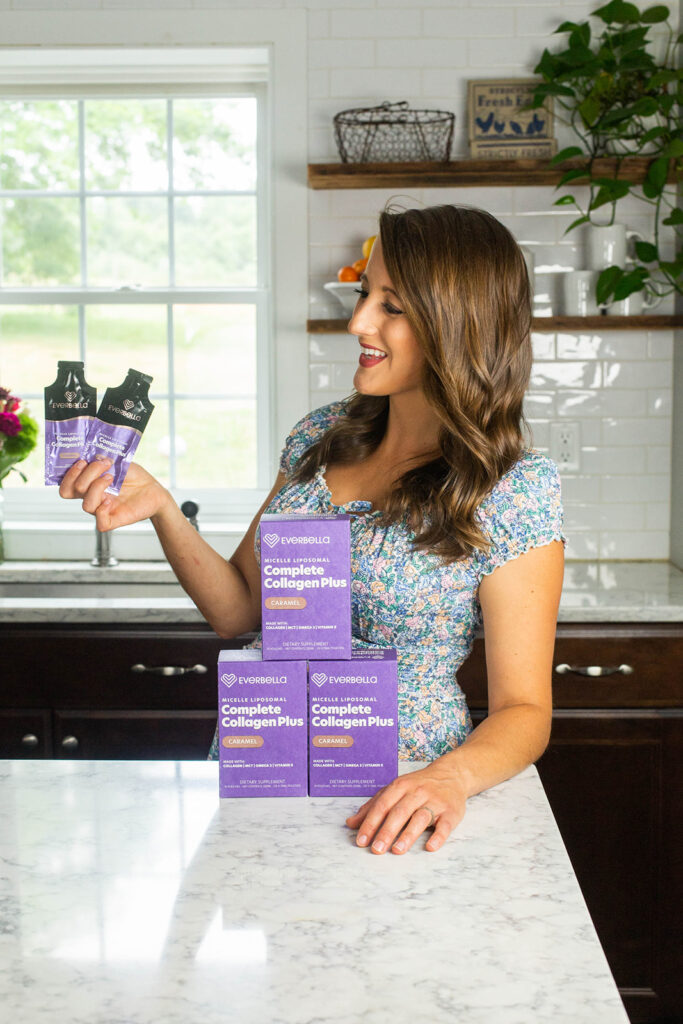
That’s because collagen is an important structural component of most of the tissues in our body, from our bones and skin, of course, to our hair! We need a lot of collagen to keep ourselves looking and feeling our best. And, considering that natural collagen production drops off around age 20, and continues to decrease over time, it’s important for us to continue to optimize our collagen intake as we age. [1]
After years of trying expensive product after product, I realized that I could be doing a whole lot more for my hair by doing less. By using these simple tips to protect it from damage, you could be on track for a transformation. And it doesn’t hurt to give yourself another boost with Complete Collagen+! Give your hair the love and nutrients it needs to thrive!
Citations
- “Collagen Synthesis.” Collagen Synthesis – an Overview | ScienceDirect Topics, https://www.sciencedirect.com/topics/engineering/collagen-synthesis.
Radiate Beauty with the B Complex!
I’ve said it before, and I’ll say it again: when it comes to maintaining the health of our hair and skin, nutrition is key.

That’s because there are many nutrients we get from our diet that are essential for the maintenance of tissues with high cell turnover and regeneration – i.e. our hair and skin! Trust me, when it comes to beauty that radiates from the inside and out, a healthy diet will set you up for success.
There are a group of nutrients in particular that really make a difference in the health and appearance of hair and skin – the B complex, which is a combination of eight essential B vitamins. Today I will break down the B complex in a little more detail, so you can understand the difference between each of these B vitamins, and how they play a role in your physical health and appearance.
The B Complex
Eight essential vitamins make up the B complex: thiamine (B1), riboflavin (B2), niacin (B3), pantothenic acid (B5), pyridoxine (B6), biotin (B7), folic acid (B9), and cobalamin (B12). Let’s walk through the benefits of each of these vitamins, how deficiency impacts your health, as well as where you can find these vitamins in your diet.
B1 (Thiamine)
Thiamine is the first of the B complex vitamins. It maintains the health and function of our cells & promotes healthy nerve, brain, muscle, heart, stomach, and intestinal function. It’s also essential for our ability to convert carbohydrates into energy, which is essential for the health and survival of all the cells in our body. Thiamine only stays in the body for a short amount of time, so it’s important to be consistent about your daily intake or supplementation. [1]
Thiamine is an incredibly important vitamin for our overall wellness, and there is still much to be discovered about it’s relationship with the health of our hair and skin. One important animal study found that thiamine worked closely with collagen to promote healing after injury, which is another reason why it’s so important to maintain a healthy thiamine status. [2]
Food sources of thiamine include: whole grains, meat, fish, fortified foods like bread and cereals.
B2 (Riboflavin)
Next, we have riboflavin, or vitamin B2! Riboflavin is another B vitamin involved in energy production, cellular function, growth, and development. Which of course, is also an essential component in the turnover of skin cells and hair. While you may not notice the effects of having a healthy riboflavin status, you will certainly feel the effects of deficiency on your skin and hair health.
Riboflavin deficiency results in skin degradation, swollen and cracked lips, red, itchy eyes, as well as hair loss. Deficiency is rare, however, it’s important to know the symptoms and how they may affect your skin and hair health. [3]
Food sources of riboflavin include: Eggs, organ meats (kidneys and liver), lean meats, milk, some green veggies, and fortified foods.
B3 (Niacin)
Niacin, or vitamin B3, is an important vitamin for skin health, as well as energy production (are you starting to notice a trend?). There is also some research to support that niacin is important for reducing risk of cardiovascular disease, by improving lipid levels. [4] Niacin deficiency results in a condition called pellegra, and while rare, this condition can result in a dark and scaly skin rash, as well as inflammation of the tongue, fatigue, and memory problems. [4]
There is some evidence to support that one particular form of niacin, niacinamide, is particularly important for the health and appearance of our skin. In fact, nicinamide may benefit our skin in a variety of ways.
- Niacinamide promotes keratin production in our skin. Keratin is a protein that protects our skin and keeps it strong [5]
- It helps with inflammation, and can reduce redness in conditions such as eczema and acne. [5]
- Niacinamide may help improve fine lines and wrinkles in aging skin. [5]
Food sources of niacin include: Poultry, beef, fish, nuts, legumes, and fortified grains.
B5 (Pantothenic Acid)
Pantothenic acid is the next of the B complex vitamins, and is also an essential component of our metabolism. Specifically, it is important for the breakdown of fats, and the synthesis of essential fatty acids in our body. Dietary panthothenic acid is widely available in our diet. However, when it comes to skin and hair appearance, it’s usually found in synthetic forms. [6]
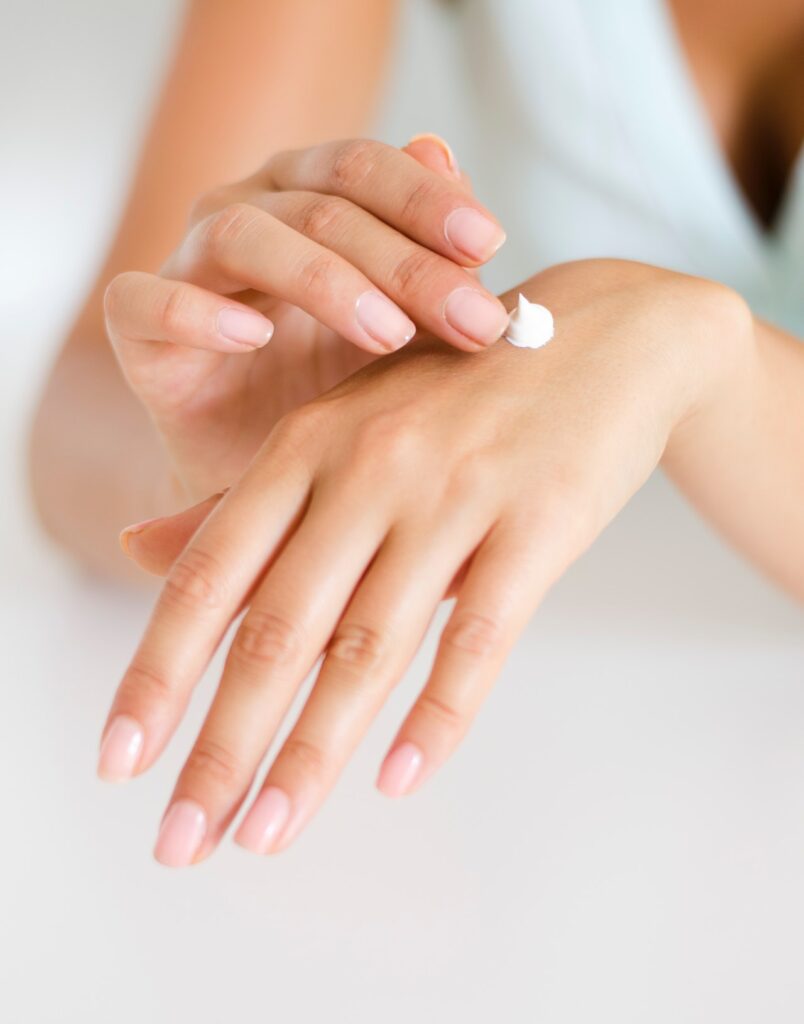
Many cosmetic products include a form of pantothenic acid called dexpanthenol, which helps to add moisture to the skin. Another form of B5, panthenol, is known to improve hair texture and sheen, and may also be effective in preventing acceleration of hair thinning. [7]
Food sources of pantothenic acid include: Beef, chicken, organ meats, whole grains, fortified foods, and some vegetables. It’s important to note that research indiciates that only 40-61% of B5 is absorbed from food. [6]
B6 (Pyridoxine)
Vitamin B6 is an essential B complex vitamin known to be involved in metabolism, particularly the metabolism of proteins. It’s also essential in the maintenance of our cognitive health, and is involved in the synthesis of neurotransmitters. Like some of the B vitamins on this list, it’s essential for the health of our skin. However, one may not notice until they’re deficient in B6.
Vitamin B6 deficiency is associated with dermatitis, scaling lips, cracks at the corners of the mouth, inflamed, swollen tongue, poor immune function, depression, and confusion. It’s important to make sure you’re getting enough B6 to prevent deficiency and associated decline in skin health. [8]
Food sources of pyridoxine include: Fish, beef liver and other organ meats, starchy veggies like potatoes, and non-citrus fruits
B7 (Biotin)
Vitamin B7, or more commonly known as biotin, is an essential nutrient for the metabolism of carbohydrates, proteins, and fats, and is also known to be useful for gene regulation and signaling between cells. Biotin deficiency can wreak havoc on your hair, skin, and nails. Symptoms may include rashes and leisions around your mouth and nose, skin infection, hair loss/thinning, and brittle, breakable nails. [9]
However, some studies have found that biotin supplementation in healthy individuals was associated with reduced hair loss and improved hair growth, though more research needs to be done. [10-11] Ultimately, it seems that preventing biotin deficiency is most important for the protection of your hair, skin, and nail health.
Food sources of biotin include: Organ meats, eggs, fish, meat, seeds, nuts, and sweet potatoes.
B9 (Folate)
Vitamin B9, also known as folate, is an incredibly important vitamin in the B complex. It is most well-known for its role in DNA synthesis. While essential for all, it is especially important for pregnant women, as folic acid deficiency is associated with neural tube defects in fetuses. Folate deficiency is also associated with megaloblastic anemia, sores in the mouth and on the tongue; changes in skin, hair, and fingernail pigmentation.

There has been research to suggest that folate is important for those who are living with autoimmune and inflammatory conditions, such as lupus, psoriasis, and rheumatoid arthritis. Folate supplementation may even be a treatment option for those with inflammatory skin conditions, such as psorisias. [12] Because folate is so essential for DNA synthesis, there is also some reason to believe that it can help improve the appearance of skin and hair by promoting healthy turnover of cells. [13]
Food sources of folate include: Dark green leafy vegetables, fruits and fruit juices, nuts, beans, peas, seafood, eggs, dairy products, meat, poultry, and grains
B12 (Cobalamin)
The last of the B complex vitamins is vitamin B12, sometimes referred to as cobalamin. Vitamin B12 often is regarded as one of the most important B vitamins. It is an essential component of the development and maintenance of the central nervous system, and is important for our neurological health. It also helps create and maintain the health of red blood cells, supports health division of DNA, and of course, helps maintain the integrity of our skin, nails, and hair. [14-18]
Deficiency of vitamin B12 is a little more common, as there are some groups of individuals who are at higher risk, such as: the elderly, vegetarians, those who have had gastrointestinal surgery, and those who have pernicious anemia. B12 deficiency may show up in a variety of ways, but can manifest in the skin and hair. Research has show that B12 deficiency may result in skin hyperpigmentation, weakness, fatigue, shortness of breath, tingly fingers, heart palpitations, vitiligo, mouth sores, and hair changes. Even if you are getting enough vitamin B12 through your diet, it may still be wise to supplement. [19]
Food sources of B12 include: Fish, meat, poultry, eggs, dairy products, fortified grains, and nutritional yeast.
Phew. That was a lot of information to cover, but it’s important to know how the B complex vitamins can affect your overall health! Even though there are plenty of ways to get the B complex from your diet, it can be challenging to make sure all your bases are covered. The good news is that I know of a great product that will have you completely covered when it comes to the B complex! You’ve got to try Purality Health’s Micelle Liposomal Active B Complex. Like Complete Collagen+, this supplement was designed specifically with absorption in mind. You can try it risk free for 180 days with Purality Health’s money back guarantee!
Citations
- “Office of Dietary Supplements – Thiamin.” NIH Office of Dietary Supplements, U.S. Department of Health and Human Services, https://ods.od.nih.gov/factsheets/Thiamin-HealthProfessional/.
- Alvarez, O M, and R L Gilbreath. “Effect of dietary thiamine on intermolecular collagen cross-linking during wound repair: a mechanical and biochemical assessment.” The Journal of trauma vol. 22,1 (1982): 20-4. doi:10.1097/00005373-198201000-00005
- “Office of Dietary Supplements – Riboflavin.” NIH Office of Dietary Supplements, U.S. Department of Health and Human Services, https://ods.od.nih.gov/factsheets/Riboflavin-HealthProfessional/.
- “Office of Dietary Supplements – Niacin.” NIH Office of Dietary Supplements, U.S. Department of Health and Human Services, https://ods.od.nih.gov/factsheets/Niacin-HealthProfessional/#h5.
- Gehring, W. “Nicotinic acid/niacinamide and the skin.” Journal of cosmetic dermatology vol. 3,2 (2004): 88-93. doi:10.1111/j.1473-2130.2004.00115.x
- “Office of Dietary Supplements – Pantothenic Acid.” NIH Office of Dietary Supplements, U.S. Department of Health and Human Services, https://ods.od.nih.gov/factsheets/PantothenicAcid-HealthProfessional/.
- Davis, M G et al. “A novel cosmetic approach to treat thinning hair.” The British journal of dermatology vol. 165 Suppl 3 (2011): 24-30. doi:10.1111/j.1365-2133.2011.10633.x
- “Office of Dietary Supplements – Vitamin B6.” NIH Office of Dietary Supplements, U.S. Department of Health and Human Services, https://ods.od.nih.gov/factsheets/VitaminB6-HealthProfessional/.
- “Office of Dietary Supplements – Biotin.” NIH Office of Dietary Supplements, U.S. Department of Health and Human Services, https://ods.od.nih.gov/factsheets/Biotin-HealthProfessional/#h4.
- Glynis Ablon, “A 3-Month, Randomized, Double-Blind, Placebo-Controlled Study Evaluating the Ability of an Extra-Strength Marine Protein Supplement to Promote Hair Growth and Decrease Shedding in Women with Self-Perceived Thinning Hair”, Dermatology Research and Practice, vol. 2015, Article ID 841570, 8 pages, 2015. https://doi.org/10.1155/2015/841570
- Glynis, Ablon. “A Double-blind, Placebo-controlled Study Evaluating the Efficacy of an Oral Supplement in Women with Self-perceived Thinning Hair.” The Journal of clinical and aesthetic dermatology vol. 5,11 (2012): 28-34.
- “Office of Dietary Supplements – Folate.” NIH Office of Dietary Supplements, U.S. Department of Health and Human Services, https://ods.od.nih.gov/factsheets/Folate-HealthProfessional/.
- Gisondi, Paolo et al. “Folic acid in general medicine and dermatology.” The Journal of dermatological treatment vol. 18,3 (2007): 138-46. doi:10.1080/09546630701247930
- Institute of Medicine, Food and Nutrition Board. Dietary Reference Intakes for Thiamin, Riboflavin, Niacin, Vitamin B(6), Folate, Vitamin B(12), Pantothenic Acid, Biotin, and Choline. Washington, DC: National Academies Press; 1998.
- Carmel R. Cobalamin (vitamin B12). In: Ross AC, Caballero B, Cousins RJ, Tucker KL, Ziegler TR, eds. Modern Nutrition in Health and Disease. 11th ed. Baltimore, MD: Lippincott Williams & Wilkins; 2014:369-89.
- Allen LH. Vitamin B12. In: Coates PM, Betz JM, Blackman MR, et al., eds. Encyclopedia of Dietary Supplements. 2nd ed. London and New York: Informa Healthcare; 2010:812-20.
- Allen LH. Vitamin B-12. Adv Nutr 2012;3:54-5. [PubMed abstract]
- Stabler SP. Vitamin B12. In: Marriott BP, Birt DF, Stallings VA, Yates AA, eds. Present Knowledge in Nutrition. 11th ed. Washington, DC: Elsevier; 2020:257-71.
- “Office of Dietary Supplements – Vitamin B12.” NIH Office of Dietary Supplements, U.S. Department of Health and Human Services, https://ods.od.nih.gov/factsheets/VitaminB12-HealthProfessional/#h5.
A Halloween Treat to Enjoy: The Benefits of Dark Chocolate!
It’s no secret that I have a major sweet tooth. With Halloween right around the corner, you might think I’d have to hide myself away from all the sweets and candy… But the truth is, I have a great solution for my guilty pleasure. A sweet treat that leaves me feeling satisfied, and pretty happy with my healthy choices – dark chocolate!
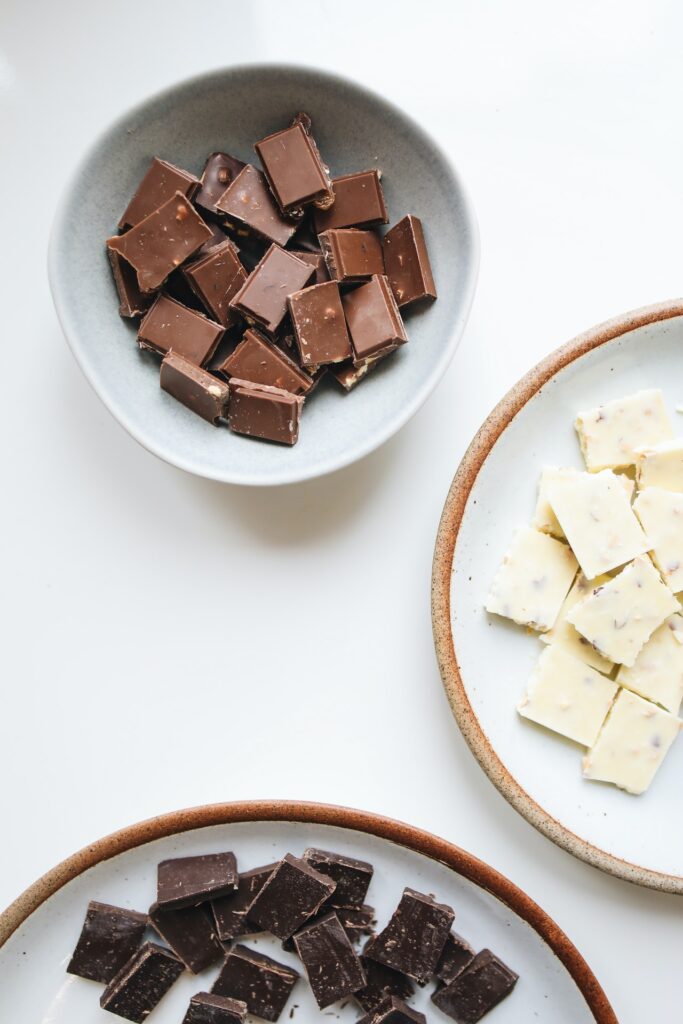
I know that the debate between milk, white, and dark chocolate is hotly contested. But, when it comes down to the actual health benefits of dark chocolate, there is no question on the winner! That’s right, it has some serious health benefits that you don’t want to miss out on. I want to walk you through the pros of choosing dark chocolate, so you know exactly what candy to ‘borrow’ Sunday night from the kiddo’s Halloween baskets.
Fiber and Minerals
Dark chocolate is actually packed densely with nutrients. It seems crazy to think that a dessert is healthy for us, but it’s true! Now, it’s important to note that the real nutrition lies in the cacao seeds that chocolate comes from… Of course, to make it taste as delicious as it is, other ingredients (like sugar) are added. Which is why at minimum, we should aim for 70% dark chocolate or higher. The higher the percentage, the more bitter it may taste, but that’s because we are getting more of the real chocolate, and less of the sugar!
When it comes to the nutrient profile of high percentage dark chocolate, this sweet treat boasts an impressive resume. One bar of dark chocolate (about 100 grams) offers:
- 8 grams of protein
- 11 g of dietary fiber (44% DV)*
- 12 mg of iron (67% DV)
- 230 mg of magnesium (58% DV)
- 311 mg of phosphorus (31% DV)
- 722 mg of potassium (21% DV)
- 3.3 mg of zinc (22% DV)
- 1.8 mg of copper (89% DV)
- 2 mg of manganese (98%) [1]
*% DV means percentage of the Daily Value of a nutrient. This number is based on the needs of an average individual, and is based on a standard 2,000 calorie diet. Depending on the individual, you may need more or less than the % Daily Value, but it can be a helpful reference point!
Of course, you might not eat an entire bar of chocolate in one sitting, but this list is a good representation of how packed full of nutrients that dark chocolate is. It doesn’t stop there either. Keep reading, because it gets even better!
Rich in Antioxidants
Dark chocolate is also rich in antioxidants, particularly flavonols and polyphenols. These are just two of the many types of antioxidants, but they all essentially work the same.
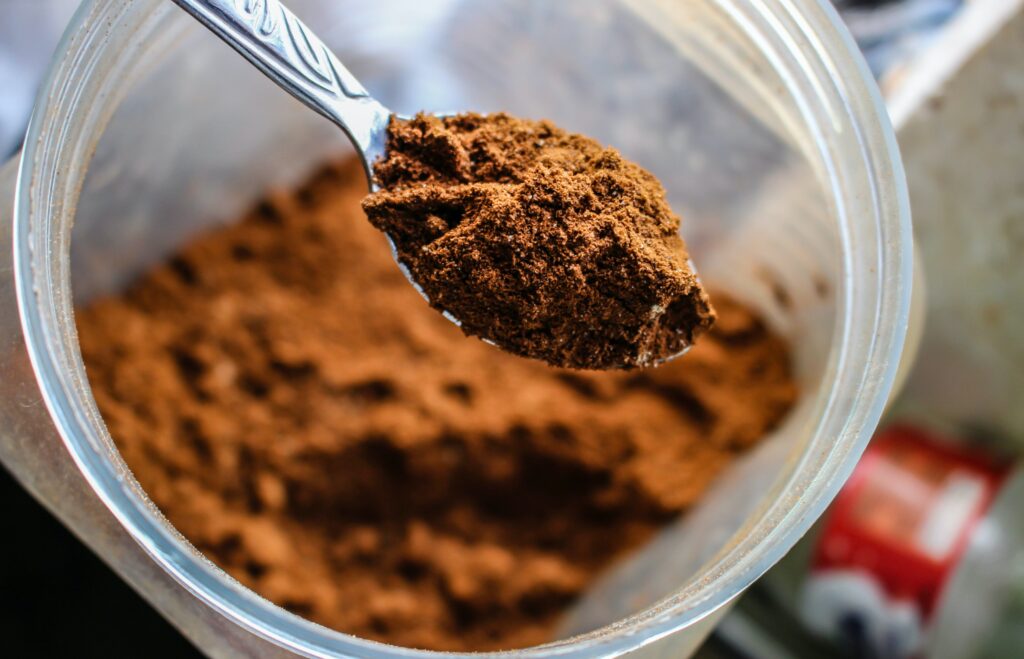
Antioxidants fight against free radicals, and protect the body against oxidative damage. Free radicals are unstable molecules that can damage the healthy cells in our bodies in order to stabilize themselves. We accumulate free radicals from environmental exposure to toxins, such as tobacco smoke and UV light, and also as a natural byproduct of our body’s metabolic processes. Beta-carotene, and other antioxidants, protect against these free radicals by stabilizing and neutralizing them, rendering them benign. [2]
So, dark chocolate can also benefit your health by helping prevent oxidative damage in your body! This is also an important part of why it is also considered to be a heart healthy food. Let’s dig into the research on dark chocolate and heart health next!
Heart Health
Cardiovascular disease is the leading cause of death worldwide, killing nearly 18 million individuals every single year. [3] So, it’s pretty important to minimize our risk of heart disease as much as possible. The good news is that there are many modifiable risk factors that help reduce risk; lifestyle factors, such as diet, exercise, cessation of smoking, and moderating alcohol intake.
So, as you can probably guess, dark chocolate does fall into the ‘diet’ category when it comes to controlling risk factors associated with heart disease. There is actually a good amount of research to indicate that it can benefit our cardiovascular system, for a couple of reasons.
Dark Chocolate & Cholesterol
First, as an antioxidant, dark chocolate is able to limit the oxidation of LDL cholesterol (commonly known as the ‘bad’ cholesterol). Oxidized LDL cholesterol has interacted with free radicals, and can travel through the bloodstream causing damage to the circulatory and cardiovascular systems. As an antioxidant, it can contribute to suppressing the oxidation of LDL cholesterol, and offer protection to these systems.

Next, there has also been evidence to suggest that dark chocolate may contribute to a rise in HDL cholesterol (the ‘good’ cholesterol), and to the decrease in total cholesterol. High levels of cholesterol can contribute coronary artery disease, which means that there is buildup of cholesterol in the arteries that can cause blockages and damage to these vessels. While high LDL cholesterol and total cholesterol may increase your risk of coronary artery disease, HDL cholesterol helps keep the arteries clear, and transports cholesterol back to the liver for excretion. It seems dark chocolate has the ability to improve these clinical markers, which contributes to its heart healthy qualities. [4]
Dark Chocolate & Blood Pressure
Additionally, the flavanols in dark chocolate may be helpful in reducing blood pressure. There have been several studies to show that eating dark chocolate may help lower blood pressure, though the effect is pretty minimal. [5-6] Overall, its do seem to have an effect on overall risk of heart disease. This study found that those who ate a serving of dark chocolate five times per week were significantly less likely to develop heart disease compared to those who ate less dark chocolate, or didn’t eat any at all. [7]
A Healthy, Sweet Option
So, there you have it. If you’ve been looking for some way to make it through this Halloween without breaking your health streak, dark chocolate is the perfect compromise. A couple pieces here and there, and my sweet tooth is fully satisfied. And, I know I’m getting all those benefits that I listed above!
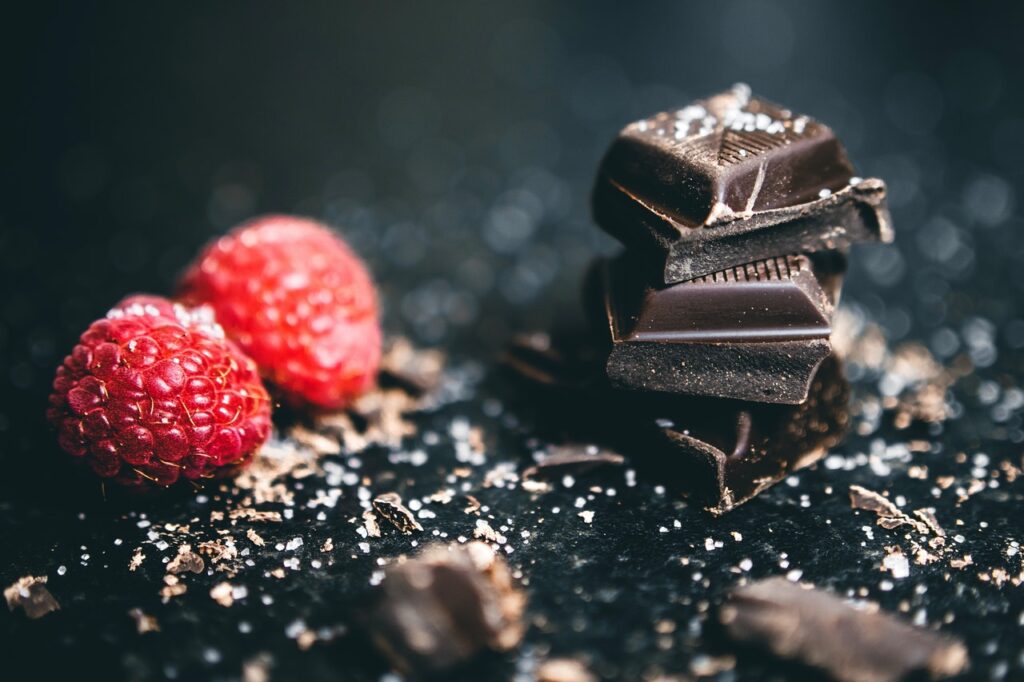
You can eat it plain and snack on a few squares from a chocolate bar, but I love to switch it up every once in a while, too! Here are some of my favorite, healthy treats that get an extra boost from a little dark chocolate.
- Apple + nut butter + dark chocolate chips
- Plain greek yogurt + drizzle of honey + granola + dark chocolate chips
- Strawberries + melted dark chocolate drizzle
- Mixed nuts + dried cranberries + dark chocolate chips
- S’mores – marshmallow + graham cracker + dark chocolate square
- Vanilla frozen yogurt + dark chocolate drizzle + Complete Collagen+ caramel drizzle
Well, to be honest, any of these desserts would be delicious with a drizzle of Complete Collagen+. Trust me, you have to try it! And you can, risk-free for 180 days with our money-back guarantee!
Citations
- Candies, Chocolate, Dark, 70-85% … – Self Nutrition Data. https://nutritiondata.self.com/facts/sweets/10638/2.
- “Understanding Antioxidants.” Harvard Health, 10 Jan. 2019, https://www.health.harvard.edu/staying-healthy/understanding-antioxidants.
- “Cardiovascular Diseases.” World Health Organization, World Health Organization, https://www.who.int/health-topics/cardiovascular-diseases#tab=tab_1.
- Baba, Seigo et al. “Plasma LDL and HDL cholesterol and oxidized LDL concentrations are altered in normo- and hypercholesterolemic humans after intake of different levels of cocoa powder.” The Journal of nutrition vol. 137,6 (2007): 1436-41. doi:10.1093/jn/137.6.1436
- Djoussé, Luc et al. “Chocolate consumption is inversely associated with prevalent coronary heart disease: the National Heart, Lung, and Blood Institute Family Heart Study.” Clinical nutrition (Edinburgh, Scotland) vol. 30,2 (2011): 182-7. doi:10.1016/j.clnu.2010.08.005
- Taubert, Dirk et al. “Effects of low habitual cocoa intake on blood pressure and bioactive nitric oxide: a randomized controlled trial.” JAMA vol. 298,1 (2007): 49-60. doi:10.1001/jama.298.1.49
- Hooper, Lee et al. “Effects of chocolate, cocoa, and flavan-3-ols on cardiovascular health: a systematic review and meta-analysis of randomized trials.” The American journal of clinical nutrition vol. 95,3 (2012): 740-51. doi:10.3945/ajcn.111.023457
